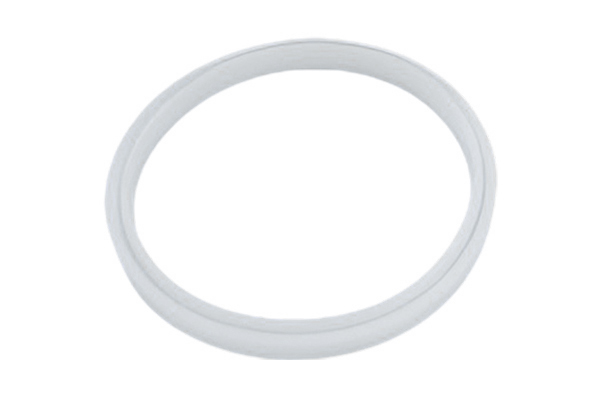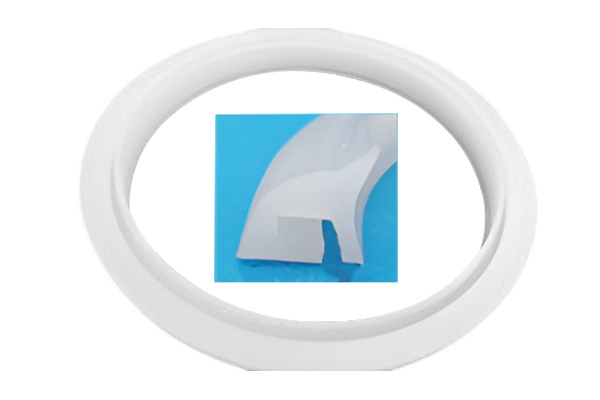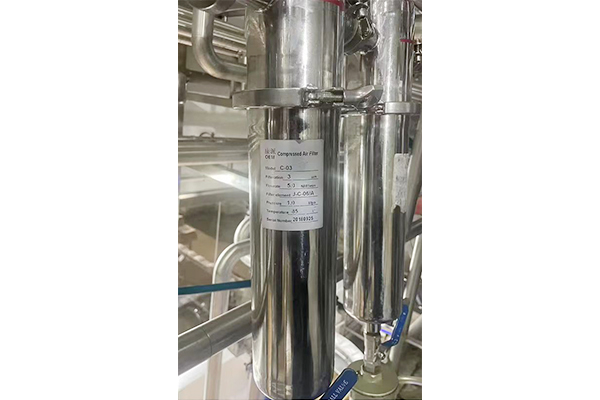How does the wire guide nozzle for laser welding machine adapt to welding wires of different diameters and materials?
Release Time : 2025-01-29
The design and function of the wire guide nozzle for laser welding machine are crucial to adapt to welding wires of different diameters and materials. The wire guide nozzle not only needs to accurately guide the welding wire into the welding area, but also needs to ensure that the welding wire will not be damaged or deviate from the track during high-speed welding.
1. Adjustable design
Adjustable wire guide nozzle: In order to adapt to welding wires of different diameters, the wire guide nozzle is usually designed to be adjustable. By changing the inner diameter of the wire guide nozzle, welding wires of different diameters can be adapted. Some wire guide nozzles are equipped with an adjustment nut or spring mechanism, allowing users to manually adjust the inner diameter size.
Modular design: Some high-end laser welding machines adopt a modular wire guide nozzle design. Users can replace wire guide nozzle modules of different specifications as needed to quickly adapt to welding wires of different diameters.
2. Material selection
Wear-resistant material: The wire guide nozzle material needs to have good wear resistance to adapt to welding wires of different materials, especially for metal wires with higher hardness, such as stainless steel, titanium alloy, etc. Common wear-resistant materials include carbide (such as tungsten steel), ceramics, and polymer materials.
High temperature resistant materials: High temperatures are generated during laser welding, and the wire guide nozzle material needs to have good high temperature resistance to prevent deformation or damage. High temperature resistant alloys and ceramic materials are common choices.
3. Geometry optimization
Streamlined design: The internal geometry of the wire guide nozzle needs to be optimized to reduce friction and wear between the welding wire and the wire guide nozzle. The streamlined design and smooth inner wall can ensure that the welding wire passes smoothly at high speed, reducing friction and heat accumulation.
Guide groove design: Some wire guide nozzles are designed with special guide grooves inside, which can accurately guide the direction of the welding wire and ensure that the welding wire does not deviate from the track during welding. The design of the guide groove needs to be optimized according to the welding wire of different diameters to ensure precise guidance.
4. Cooling system
Water cooling design: In order to prevent the wire guide nozzle from overheating during high temperature welding, some wire guide nozzles are designed with a water cooling system. Water cooling can reduce the temperature of the wire guide nozzle by circulating cooling water and extend its service life.
Air-cooled design: In some applications, the wire guide nozzle can also adopt an air-cooled design, using a fan or airflow to cool the wire guide nozzle to prevent overheating.
5. Precision machining
High-precision machining: The manufacture of the wire guide nozzle requires high-precision machining technology to ensure the accuracy of the inner diameter and geometric shape. High-precision machining can reduce the friction and deviation of the welding wire when passing through, and improve the welding quality.
Surface treatment: The surface of the wire guide nozzle usually requires special treatment, such as chrome plating, nitriding, etc., to improve the surface hardness and wear resistance and extend the service life.
6. Automatic control
Sensor monitoring: Some advanced laser welding machines are equipped with sensors that can monitor the status of the wire guide nozzle in real time, including temperature, wear degree, etc. The sensor can provide timely feedback to help users adjust or replace the wire guide nozzle to ensure the stability and quality of the welding process.
Intelligent adjustment system: Some high-end equipment is equipped with an intelligent adjustment system, which can automatically adjust the inner diameter and guide groove of the wire guide nozzle according to the diameter and material of the welding wire to achieve automatic adaptation.
7. Maintenance and care
Regular inspection: In order to ensure the long-term stable operation of the wire guide nozzle, it is necessary to regularly check the degree of wear and condition of the wire guide nozzle. For wire guide nozzles with severe wear, they need to be replaced or repaired in time.
Cleaning and maintenance: The wire guide nozzle may accumulate welding slag or dirt during use, affecting its performance. Regular cleaning and maintenance can keep the wire guide nozzle in good working condition and extend its service life.
Through the comprehensive application of the above design and technology, the wire guide nozzle for laser welding machine can flexibly adapt to welding wires of different diameters and materials to ensure efficient, stable and high-quality welding process. This flexibility and adaptability is particularly important in laser welding processes, especially in multi-variety and small-batch production, which can significantly improve production efficiency and product consistency.
1. Adjustable design
Adjustable wire guide nozzle: In order to adapt to welding wires of different diameters, the wire guide nozzle is usually designed to be adjustable. By changing the inner diameter of the wire guide nozzle, welding wires of different diameters can be adapted. Some wire guide nozzles are equipped with an adjustment nut or spring mechanism, allowing users to manually adjust the inner diameter size.
Modular design: Some high-end laser welding machines adopt a modular wire guide nozzle design. Users can replace wire guide nozzle modules of different specifications as needed to quickly adapt to welding wires of different diameters.
2. Material selection
Wear-resistant material: The wire guide nozzle material needs to have good wear resistance to adapt to welding wires of different materials, especially for metal wires with higher hardness, such as stainless steel, titanium alloy, etc. Common wear-resistant materials include carbide (such as tungsten steel), ceramics, and polymer materials.
High temperature resistant materials: High temperatures are generated during laser welding, and the wire guide nozzle material needs to have good high temperature resistance to prevent deformation or damage. High temperature resistant alloys and ceramic materials are common choices.
3. Geometry optimization
Streamlined design: The internal geometry of the wire guide nozzle needs to be optimized to reduce friction and wear between the welding wire and the wire guide nozzle. The streamlined design and smooth inner wall can ensure that the welding wire passes smoothly at high speed, reducing friction and heat accumulation.
Guide groove design: Some wire guide nozzles are designed with special guide grooves inside, which can accurately guide the direction of the welding wire and ensure that the welding wire does not deviate from the track during welding. The design of the guide groove needs to be optimized according to the welding wire of different diameters to ensure precise guidance.
4. Cooling system
Water cooling design: In order to prevent the wire guide nozzle from overheating during high temperature welding, some wire guide nozzles are designed with a water cooling system. Water cooling can reduce the temperature of the wire guide nozzle by circulating cooling water and extend its service life.
Air-cooled design: In some applications, the wire guide nozzle can also adopt an air-cooled design, using a fan or airflow to cool the wire guide nozzle to prevent overheating.
5. Precision machining
High-precision machining: The manufacture of the wire guide nozzle requires high-precision machining technology to ensure the accuracy of the inner diameter and geometric shape. High-precision machining can reduce the friction and deviation of the welding wire when passing through, and improve the welding quality.
Surface treatment: The surface of the wire guide nozzle usually requires special treatment, such as chrome plating, nitriding, etc., to improve the surface hardness and wear resistance and extend the service life.
6. Automatic control
Sensor monitoring: Some advanced laser welding machines are equipped with sensors that can monitor the status of the wire guide nozzle in real time, including temperature, wear degree, etc. The sensor can provide timely feedback to help users adjust or replace the wire guide nozzle to ensure the stability and quality of the welding process.
Intelligent adjustment system: Some high-end equipment is equipped with an intelligent adjustment system, which can automatically adjust the inner diameter and guide groove of the wire guide nozzle according to the diameter and material of the welding wire to achieve automatic adaptation.
7. Maintenance and care
Regular inspection: In order to ensure the long-term stable operation of the wire guide nozzle, it is necessary to regularly check the degree of wear and condition of the wire guide nozzle. For wire guide nozzles with severe wear, they need to be replaced or repaired in time.
Cleaning and maintenance: The wire guide nozzle may accumulate welding slag or dirt during use, affecting its performance. Regular cleaning and maintenance can keep the wire guide nozzle in good working condition and extend its service life.
Through the comprehensive application of the above design and technology, the wire guide nozzle for laser welding machine can flexibly adapt to welding wires of different diameters and materials to ensure efficient, stable and high-quality welding process. This flexibility and adaptability is particularly important in laser welding processes, especially in multi-variety and small-batch production, which can significantly improve production efficiency and product consistency.







